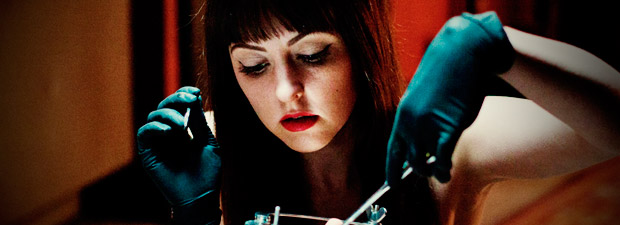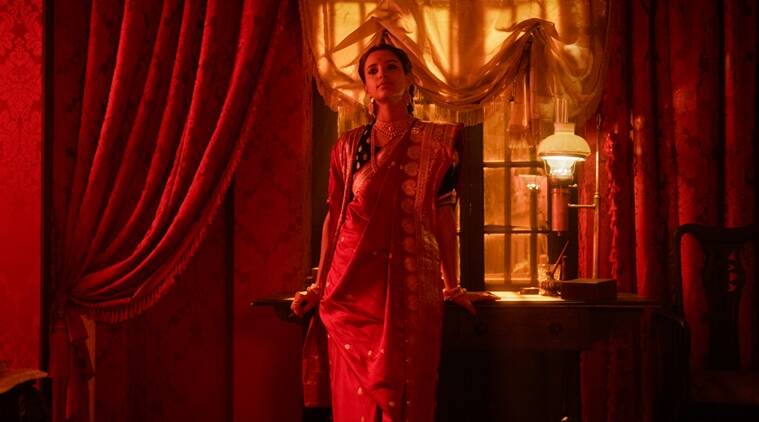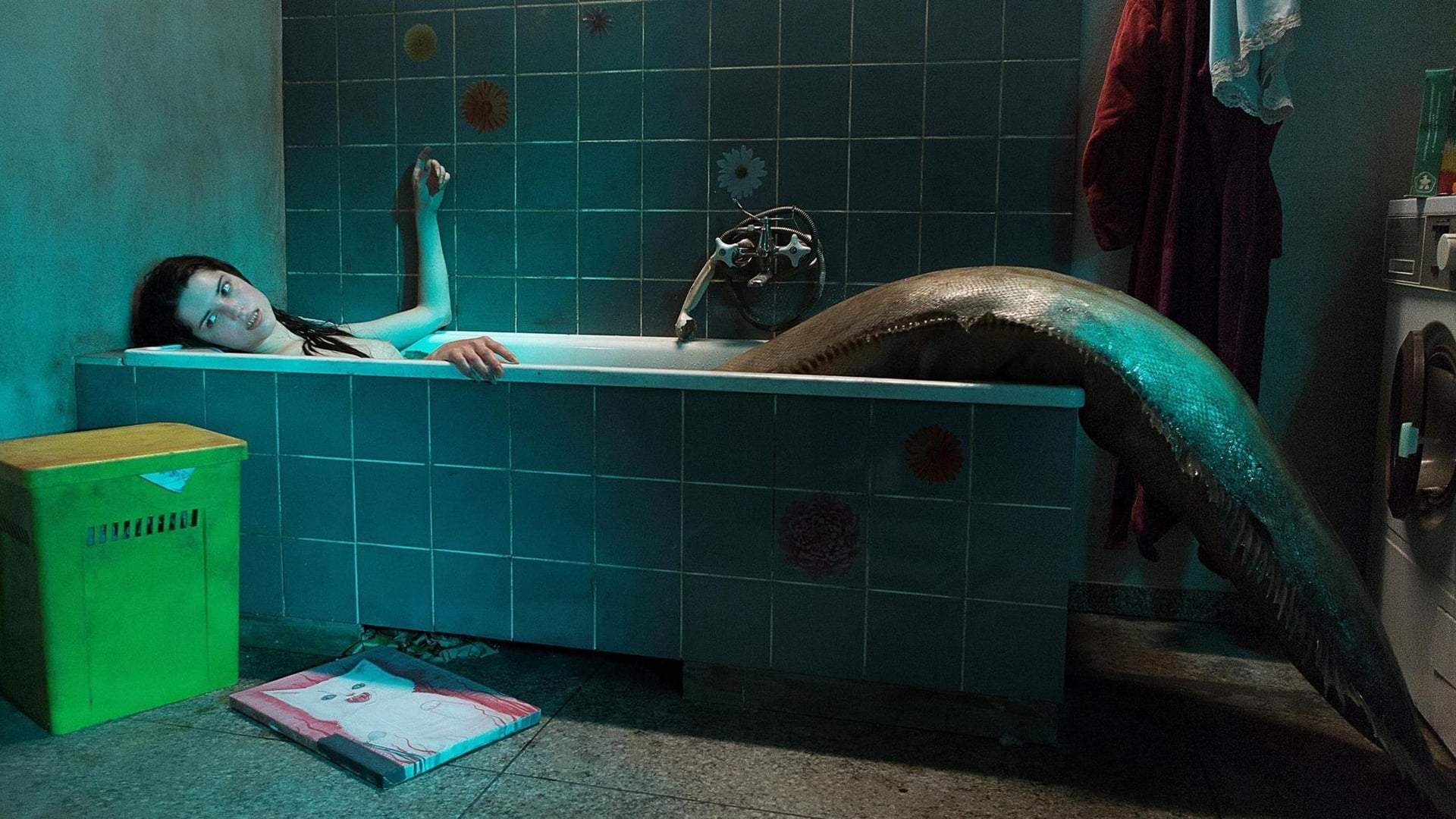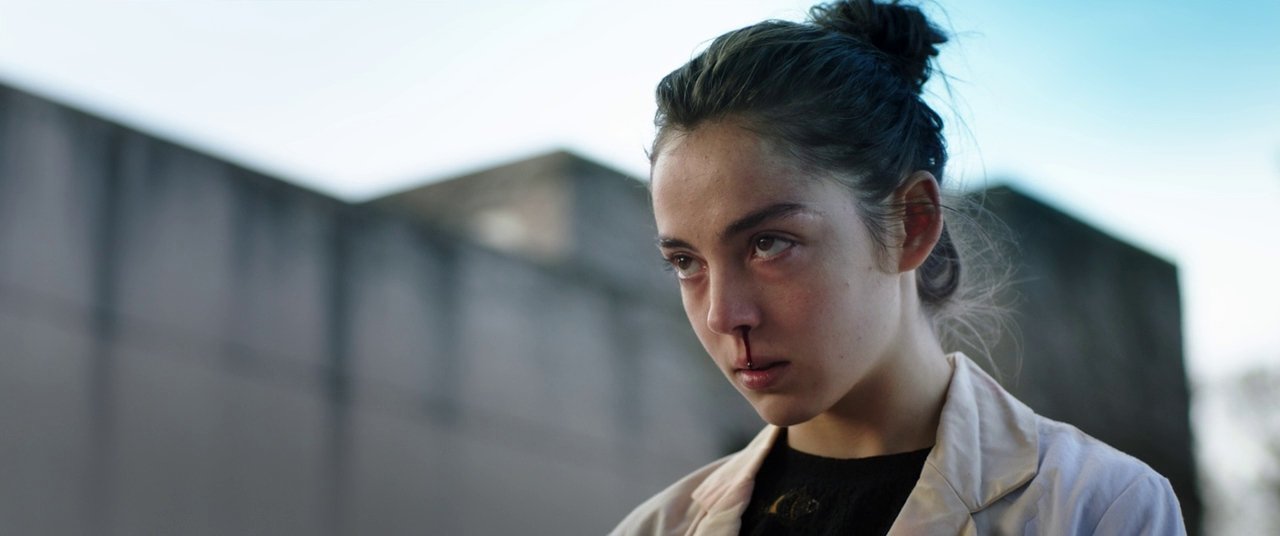Weird Just Got Its Own Movie In, 'Weird: The Al Yankovic Story'
Weird has a name and it's, Weird Al. 'Weird: The Al Yankovic Story' makes you want to "Eat it" then "Beat it".
Incluvie Foundation Gala - Learn More
Horror has a long history of murdering its women characters. This is because horror films uphold the gender ideology that women are far less superior to men; hence, women in horror are often slashed or eaten. One might argue that the lack of a woman’s gaze or relatable women characters leads many women spectators to not fall in love with the slasher genre. While Carol Clover’s final girl might make women pumped up about seeing a woman survive a horror film, that doesn’t mean all women would identify with the final girl (especially if she’s written stereotypically). I’ve discovered that there’s a new horror genre: a genre that combines slasher, cerebral (psychological horror), or women’s horror that are often directed, written, produced, and/or starring women. Coined by Amy Jane Vosper comes a new hybrid horror genre: cerebral gore.
According to Vosper’s Film, Fear, and the Female, “This new subgenre, to which I shall refer as cerebral gore, often purposefully subverts the male gaze or satirically employs it as commentary on its undesirability.” Vosper mentions these films are usually marketed for women, but do not exclude men’s viewership. The main goal of cerebral gore is to make a social commentary on gender. Particularly, the role women play in slashers. Another goal is to make women the star of the horror genre without villainizing them. For this reason, cerebral gore films will have a main woman protagonist that women audiences can identify with. Additionally, cerebral gore allows women spectators to enjoy the gore and violence as, what Vosper describes as, “visceral imagery.” This proves that women do love gory films, but probably not the ones where women are the victims. I have come up with a ranking list of five cerebral gore films, so we can further evaluate what makes a horror film a cerebral gore. Who knows, maybe you’ve watched a cerebral gore film without even knowing it.

If you’re a fan of Katharine Isabelle, you will love her in American Mary (2012). Katharine Isabelle is no stranger to the horror genre. Most people know her in Ginger Snaps (2000) as a werewolf, and if you’re like me, you know her as the character Ava in Supernatural. Watching her in Ginger Snaps and Supernatural, I can tell that Katharine Isabelle is great at playing a villainess, but it’s hard to say if she’s a villain in American Mary. Directed by The Soska Sisters, a.k.a. The Twisted Sisters, American Mary, focuses on a surgical med student (Mary) who is struggling to pay her tuition. So, she makes a living giving surgical patients body modifications. The film doesn’t sound as scary, but one of the horrors of the film is watching Mary slicing the nipples off a woman, who wants to remove her breasts and have a sealed vagina. The reasoning behind this procedure is to bring social commentary on how women are constantly erotized by men. In order for the woman to avoid being a sex toy for her husband, she wants her body to be censored like a Barbie doll. Check out Ateryo’s, “15 Modern Horror B-Movies To Watch This October” referencing, American Mary.
Things take a turn when Mary is raped and drugged by her professor at a party he invites her to. Once Mary realizes what happened, she exacts revenge by kidnapping her professor and torturing him by performing a severe body modification and mutilating him. Ultimately, her obsession with body modification kills her in the end. Amy Jane Vosper specifically mentions American Mary as a cerebral gore-horror film that utilizes gore to not necessarily frighten women spectators, but that “appeals to the artistic and aesthetic sensibilities of the viewers.” This can be seen in Mary’s death scene. As she lies on the floor bleeding to death, we see her in a restful pose, and her blood smeared on the floor looks like splattered paint, making her death look like a painting.

Many are familiar with the romanticized Bollywood genre, but Bollywood isn’t always about singing and dancing. I’ve always found Bollywood-horror films to be one of the scariest of the foreign genres; there’s something about the retelling of their myths that makes it seem all too real. Directed by Anvita Dutt Guptan, Bulbbul (2020) is told through many flashbacks from our titular character, who is a child bride. Set in Bengal, Bulbbul was married to an older man when she was five years old. Twenty years later, the once passive Bulbbul has become a confident woman who seems to be in control of her destiny. During this time, her brother-in-law was thought to have been murdered by a wild animal, but some suspect it to be an ancient Hindi demon called a chudail. According to South Asian folklore, a chudail was once a woman who had suffered at the hands of her in-laws (particularly men of the family). She then returns as a revenant who seeks revenge on the men who have done her wrong.
As the flashbacks lead to Bulbbul’s womanhood, it is foreshadowed that her husband abused her. Indranil (Bulbbul’s husband) punishes her for falling in love with his youngest brother (who is around the same age as her) by beating her feet, causing her to be bedridden. Unfortunately, Bulbbul’s trauma doesn’t stop there. She is then raped by Indrail’s second eldest brother, who has had a fascination with her since she was a child. It is revealed that after her sexual assault, she became a chudail and only killed men who hurt women. However, one might argue that Guptan made a feminist twist on the chudail lore. Bulbbul is more a hero than a villain. Despite becoming a vengeful demon, she never harmed innocent lives and wanted to prevent women from suffering the same fate that she has. Bulbbul critiques the revenge-rape genre (which not many women are fans of) as well as the fate of women in Southern Asia.

Categorized as a Polish rock opera horror-musical, The Lure (2015) takes us back to the 80s, when neon and mermaids are Poland’s new sensation. The Lure, directed by Agnieszka Smoczyńska, is one of the many adaptations of Hans Christian Andersen’s The Little Mermaid. Our mermaids are two sisters named Silver and Golden who are curious about the world beyond the reef. Naturally, they seduce band members with their siren call, eat them (these are cannibalistic mermaids), and join a rock band at a nightclub. Their tails are no secret to the men they entertain. In one of the scenes, the two sisters are in a large margarita glass, filled with water, and we see them in their mermaid form. Out of all the films on this list, The Lure is the most gruesome of them all. The scenes of the mermaids eating the men (particularly, Golden) are extremely graphic. Silver and Golden would definitely fit into what Barbara Creed calls monstrous-feminine.
While the young women are portrayed as monstrous, they are never sexualized. Unlike other previous femme fatales, that are sexualized either to cater to the male gaze or intentionally to criticize the trope. Smoczyńska doesn’t erotize her mermaids because she knows that men conjure the images we associate with mermaids. Silver and Golden’s tails have a lumpy texture like a slug and a grayish color like an eel (just look at the picture above as an example.) When Silver and Golden are presented nude; we don’t see them as sexy. They have a natural beauty about them, but their full-frontal nudity is meant to be uncomfortable, even for men. As, film critic, Aline Dolinh puts it, The Lure “uses the language of kitsch and B-movie horror to spell out the genuine material anxieties that young women have about their bodies and the sovereignty (or lack thereof) they possess over them.” While the film has its scares with its fanged mermaids, it’s still quite joyful with our main characters enjoying the human experience for the first time, and the amazing music numbers that make you forget you’re watching a horror film.

My interest in foreign-horror movies led me to research Raw (2016), which is one of the scariest films I’ve heard about. I am not, particularly fond of horror films involving humans eating each other, which is why the premise of a film about a vegetarian girl who turned into a flesh eater was scary enough. But, to my surprise, I found Raw to be relatable and genuine about entering womanhood. It’s not a film about a girl eating people, unlike another film I will mention momentarily. Yes, our vegetarian, Justine, does crave human flesh after being forced into eating a rabbit, but has eaten no one in the film. Don’t get me wrong, you will at one point see flesh be eaten; I’ve even heard people cringe over the scene of Justine nibbling on a human finger. But I love how this film addresses womanhood. Personally, the scariest scene in this film is Justine’s sister attempting to wax Justine’s pubic hair. Trust me, that was a brutal scene (it even involved scissors). All in all, Raw definitely has the “visceral imagery” that Vosper discusses. It’s directed and written by a woman, and many women spectators will empathize with Justine’s unique diet, for she is not villainized in this film.
Before we reach our top number one ranking cerebral gore film, let’s go through some horror films that have the qualifications of being cerebral gore, but didn’t check all the boxes. Although, Teeth (2007) and It Follows (2014) are directed by men, it doesn’t disqualify them from being feminist. Teeth and It Follows have one theme in common: the anxiety women feel about their bodies. In Teeth, a teenage girl who is chaste gets raped by her dream boy. She then discovers that during the assault, her vagina bit off his penis. Teeth criticizes the vagina dentana myth, and the myths about vaginas, in general, constructed by patriarchy. Teeth also sheds light on women being afraid of their bodies (even their vaginas) because their bodies are taboo, while men are afraid of a woman’s vagina because its unknown territory for them.
Likewise, It Follows can be described as a film about a supernatural STD. The fear of unprotected sex and not having control over your body is relatable to any teenager. Then, there’s Jennifer’s Body (2009) directed by Karyn Kusama. Jennifer’s Body is what happens when a satanic ritual goes wrong and as a result, a cheerleader goes around eating teenage boys. The film has all the makings of being cerebral gore and a feminist horror film, that tackles the literal femme fatale trope, like in The Lure and Raw. As Vosper mentioned, “there are times when the male gaze is not subverted or questioned,” which is the case in Jennifer’s Body. Once again, this is not in conversation with the quality of the film or disqualifies it as feminist.

Some might describe this film as the first Iranian Spaghetti-Western vampire film. A Girl Walks Alone at Night (2014) focuses on The Girl (she is unnamed) who walks the streets of Bad City at night. To our surprise, she’s a vampire. In my article, I described her as Batman, for she wears a black chador that mimics a black cape; hence, she can be interpreted as a vigilante. While A Girl Walks Home Alone At Night can be interpreted as a remastering of the Spaghetti western genre, the films fall under several categories, including slasher and cerebral horror. Most of us picture serial killers with knives as the definition of a slasher, but slashers are mainly characterized by their phallic weapons. Anything sharp and protruding can be interpreted as a phallic symbol, and fangs are one of them. This is one of the ways in which A Girl Walks Home Alone at Night contains a social commentary on gender. Not only does The Girl spread fear among predatory men, but she also uses her ‘phallic’ fangs to kill the bad guys. This is ironic, given how men typically penetrate women during sex. The film may not be as gory as other cerebral gore films, but it has a good amount of bloodshed for anyone who is squeamish. Notably, this film has been directed and written by Ana Lily Amirpour, whose target audience are women.
Related lists created by the same author
Weird has a name and it's, Weird Al. 'Weird: The Al Yankovic Story' makes you want to "Eat it" then "Beat it".
Related diversity category
Related movie/TV/List/Topic
Joker is a compelling, character-driven, psychological tale that has a message behind the madness.